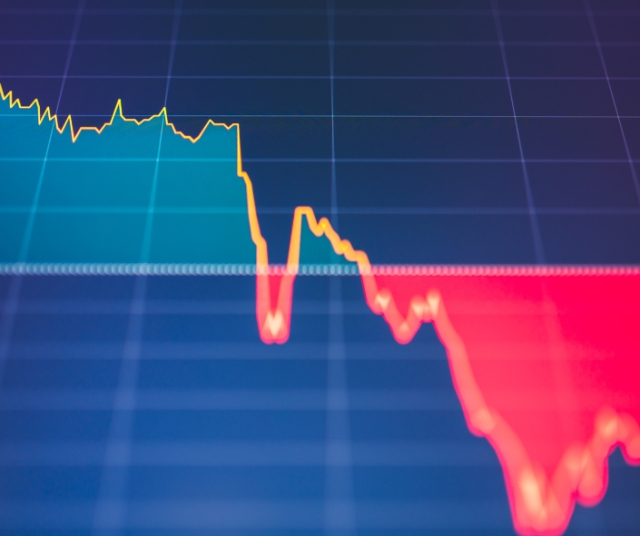Currency risk is a constant concern for companies, investors and governments in an increasingly interconnected world. This form of risk refers to the possibility that fluctuations in currency exchange rates will negatively affect the value of an investment, asset or cash flow. With the globalization of markets and increasing economic interdependence between countries, understanding and managing currency risk has become crucial to financial success and economic stability.
The nature of currency risk extends beyond the mere relationship between currency exchange rates; It is a complex reflection of the economic, political and external forces that converge in global financial markets. At its core, it is rooted in the dynamics of supply and demand for currencies, which in turn is shaped by a number of interrelated factors. From an economic perspective, a country's monetary policies, its economic stability, inflation, interest rates and debt level play a crucial role in determining the strength of its currency. These indicators not only affect confidence in the national currency, but also influence foreign investment decisions and capital flows.
Additionally, political uncertainty and geopolitical events can cause volatility in currency markets as investors react to sudden changes in political conditions that could impact economic and financial stability. Changes in government leadership, public policy uncertainty, and international conflicts are just some of the factors that can trigger abrupt movements in exchange rates.
On the other hand, external factors, such as fluctuations in commodity prices, global financial crises, and changes in the monetary policies of major central banks, can have a significant impact on exchange rates. For example, a drop in oil prices can weaken the currencies of oil-producing countries, while monetary policy decisions by the US Federal Reserve can affect the value of the US dollar relative to other currencies.
Types of Foreign Exchange Risk
There are several types of currency risk, each with its own characteristics and consequences:
Transaction Risk: This type of risk arises when a company has obligations or income in foreign currency. For example, if a U.S. company sells products in Europe and receives euros as payment, it is exposed to the risk that the value of those euros will decline relative to the U.S. dollar before the company can convert them into its local currency.
Translation Risk: Companies that operate in multiple countries and have assets, liabilities or net worth denominated in foreign currencies face this type of risk. Fluctuations in exchange rates may affect the carrying value of these items when they are consolidated in the company's financial statements.
Economic Risk: This type of risk is related to a company's exposure to changes in the general economic conditions of a foreign country. For example, if a company has a subsidiary in a country with high inflation, fluctuations in exchange rates may be exacerbated by local inflation, negatively affecting the subsidiary's financial results.
Impact of Foreign Exchange Risk
The impact of currency risk can be significant and affect different actors in various ways:
Companies: Multinational companies that carry out international operations are particularly exposed to currency risk. Unfavorable fluctuations in exchange rates can affect profit margins, competitiveness in foreign markets and financial planning capabilities.
Investors: Investors who have diversified portfolios that include assets denominated in foreign currencies also face currency risks. Fluctuations in exchange rates can affect the portfolio's total return, even if the underlying assets are performing strongly in local terms.
Governments: Governments can also be affected by currency risk, especially those whose economies are highly dependent on exports or who have debt denominated in foreign currencies. Fluctuations in exchange rates can affect the competitiveness of exports and increase the cost of external debt.
Foreign Exchange Risk Management Strategies
To mitigate currency risk, companies, investors and governments can implement various strategies, including:
Hedging: This strategy involves the use of financial instruments, such as futures contracts, options and currency swaps, to protect against unfavorable fluctuations in exchange rates. By fixing the future exchange rate through these instruments, parties can guarantee a predictable price for their foreign currency transactions.
Diversification: Geographic diversification of business operations and investments can help reduce exposure to currency risk. By having a presence in multiple countries with different currencies, companies can mitigate the negative impact of fluctuations in a specific market.
Price Adjustment: Instead of letting fluctuations in exchange rates affect profit margins, companies can adjust their prices accordingly. This involves increasing or decreasing prices of products or services in response to changes in exchange rates to maintain stable profit margins.
Active Risk Management: This involves closely monitoring currency markets and adjusting risk management strategies as necessary. By staying aware of factors that can influence exchange rates, companies can make informed decisions to protect against currency risk.
Currency risk is an omnipresent reality in a globalized and highly interconnected world. Its impact can be significant for businesses, investors and governments, but with proper understanding and implementation of appropriate risk management strategies, it is possible to mitigate its negative effects. By adopting proactive approaches such as hedging, diversification and active risk management, actors can protect themselves against unpredictable fluctuations in exchange rates and ensure greater financial stability in an increasingly volatile economic environment.
